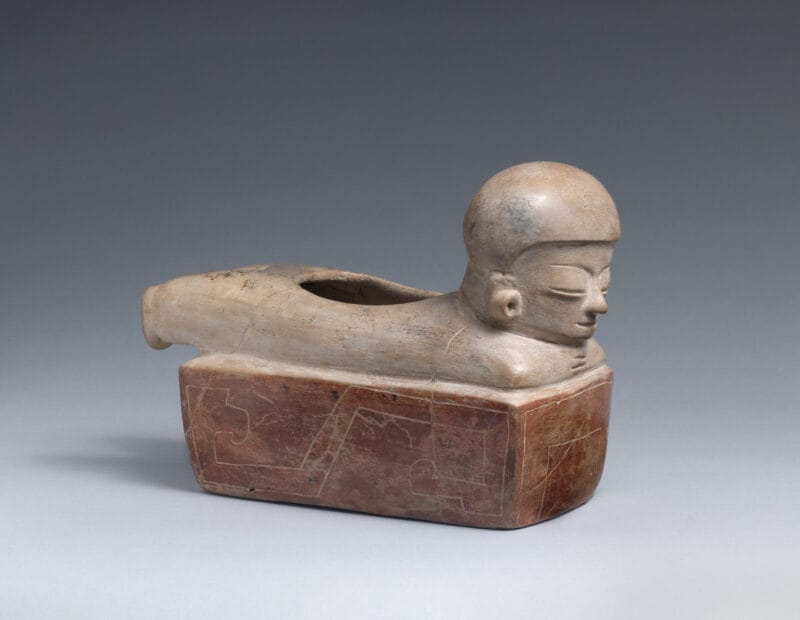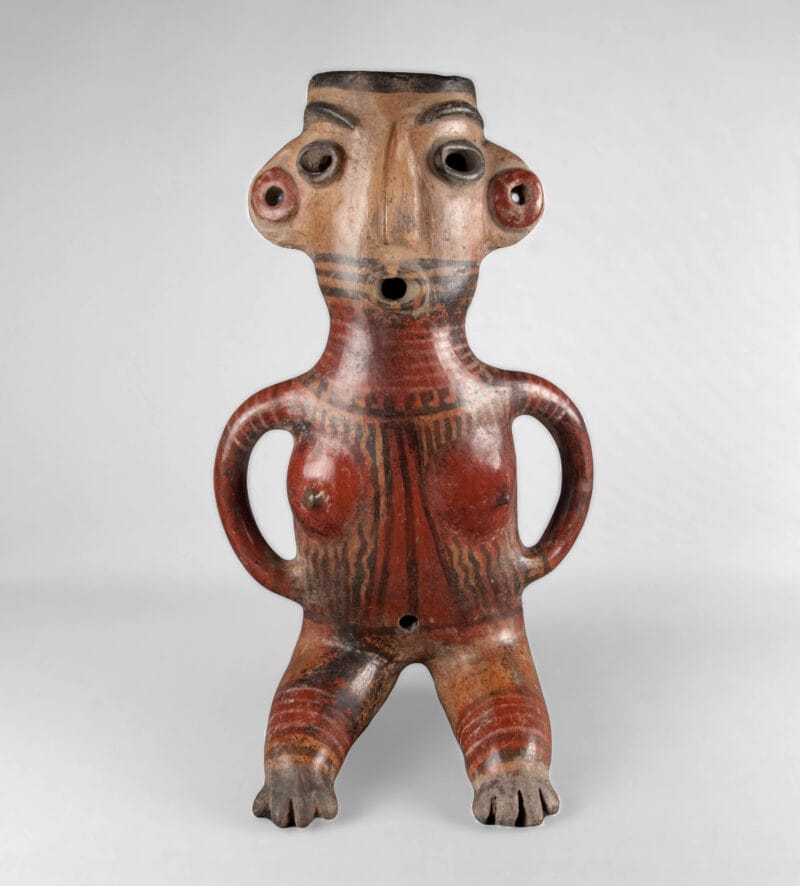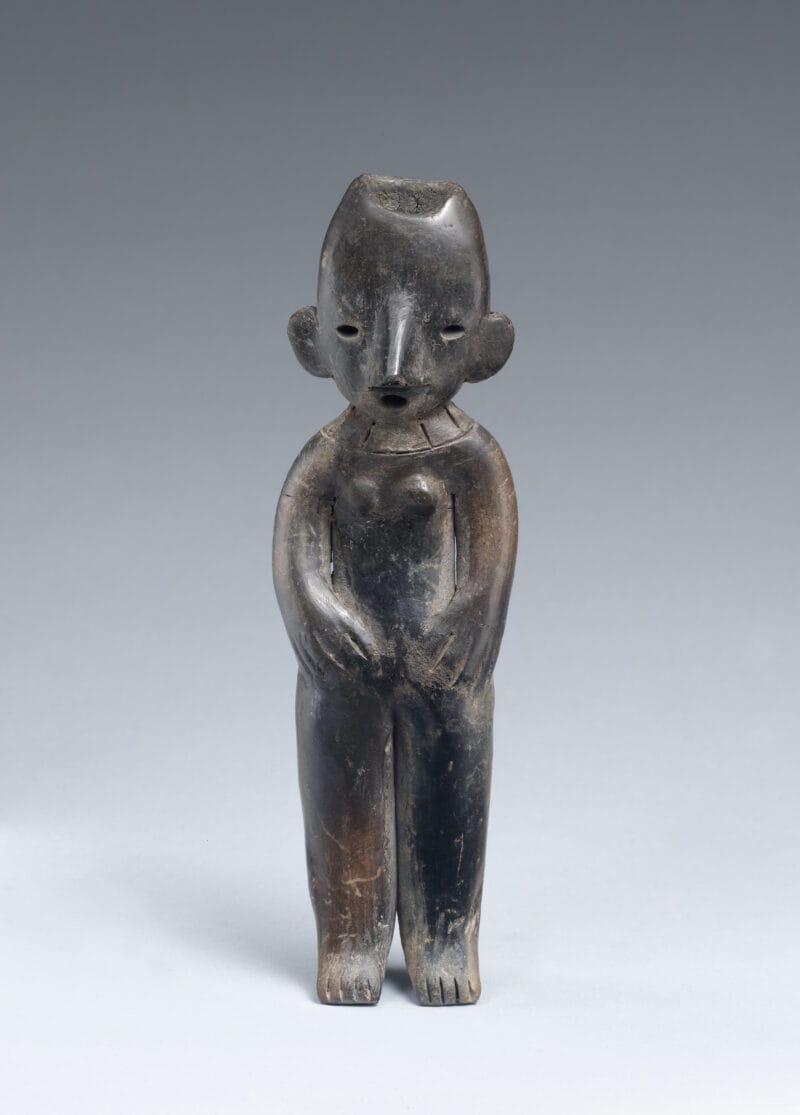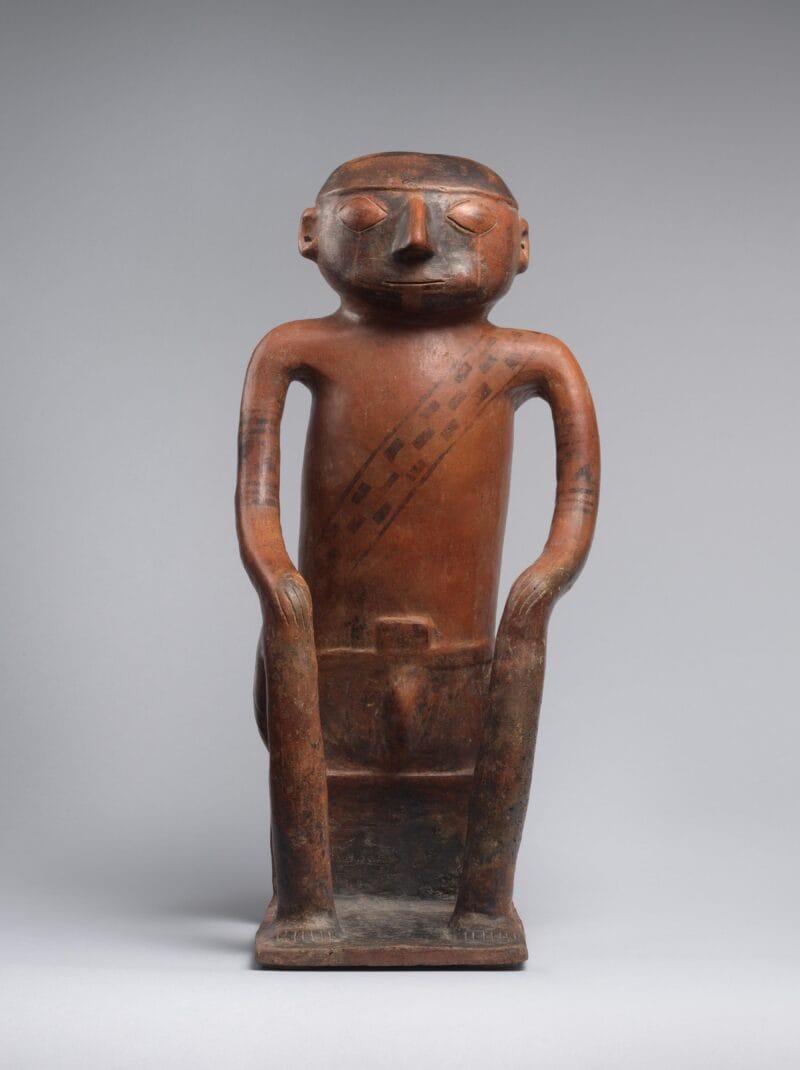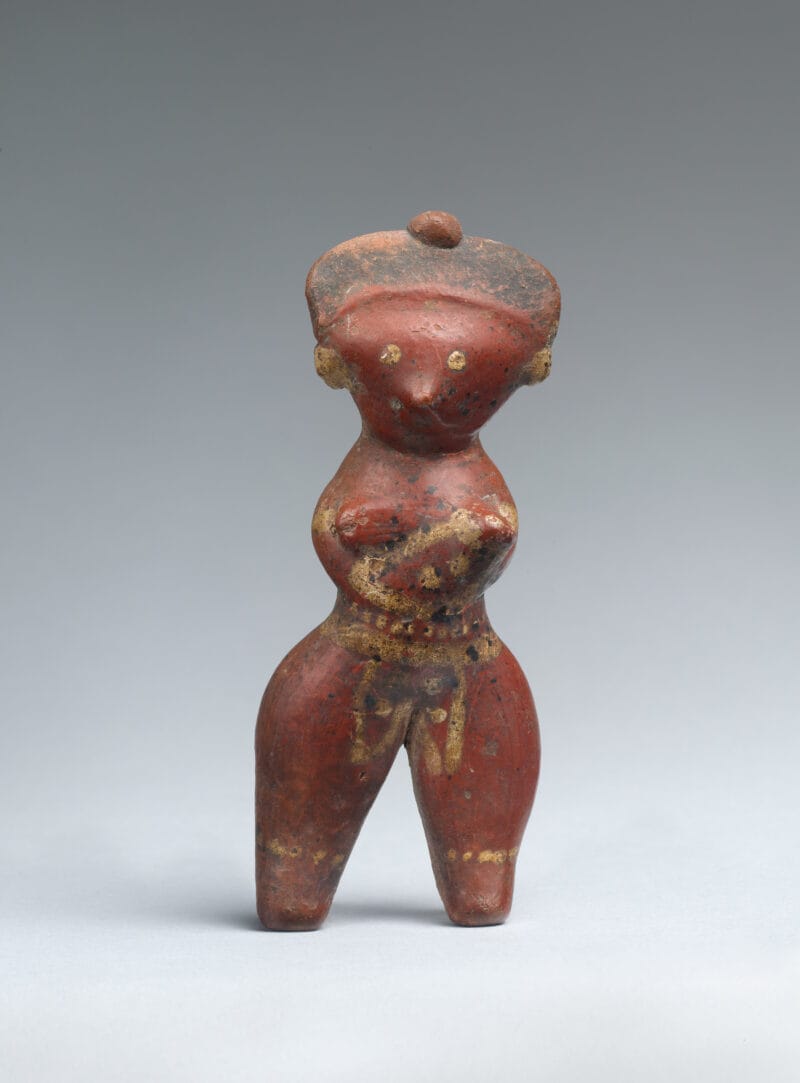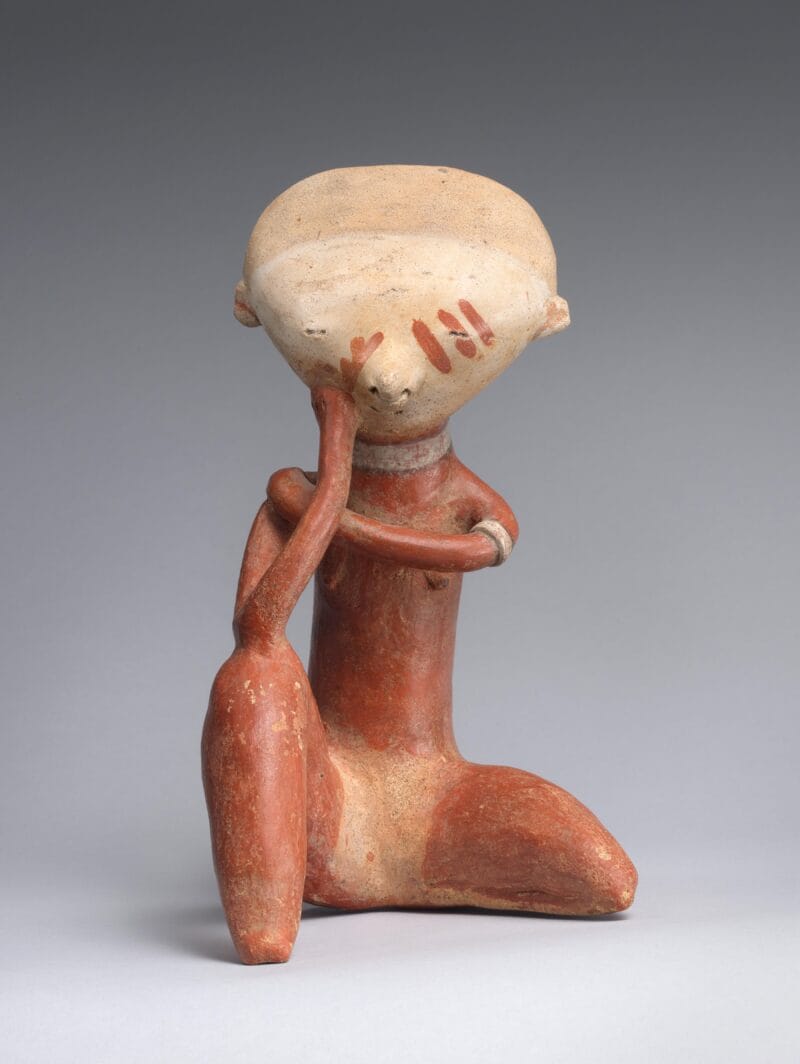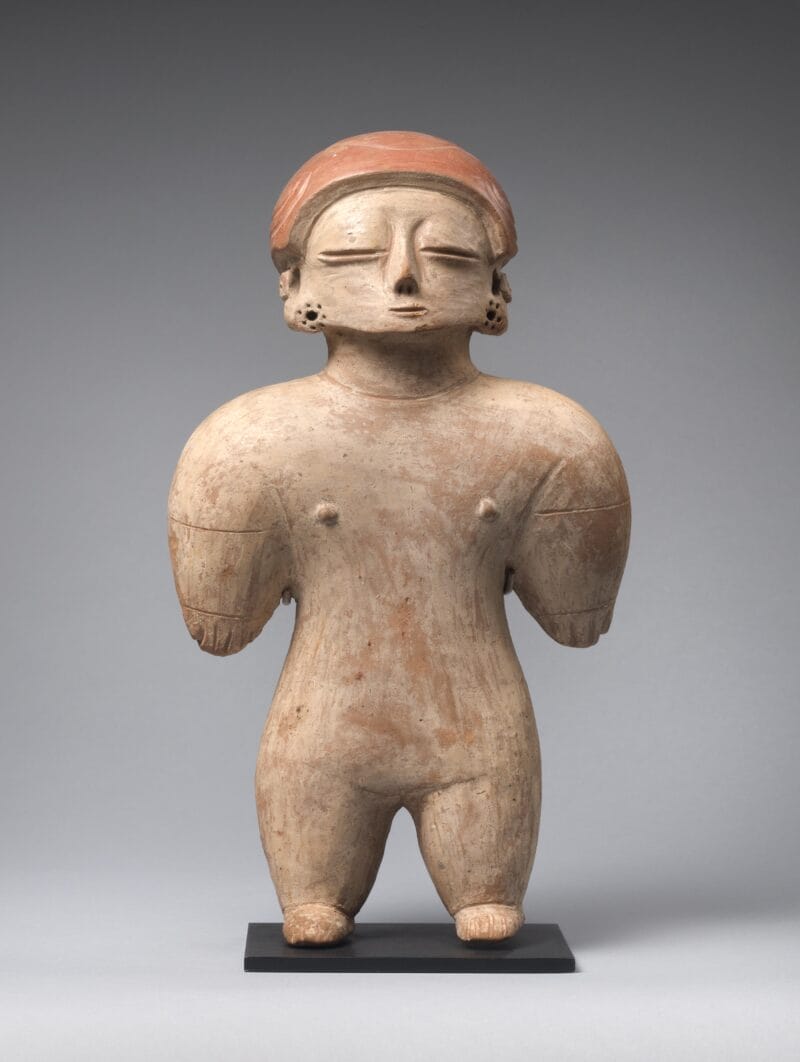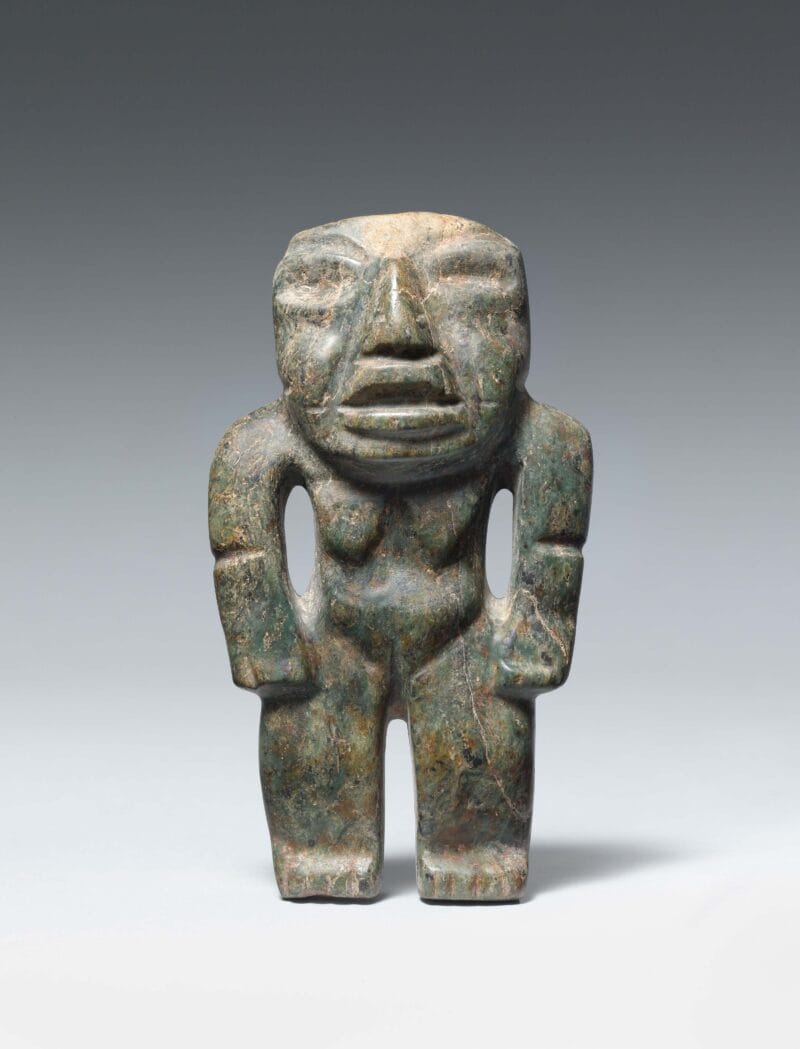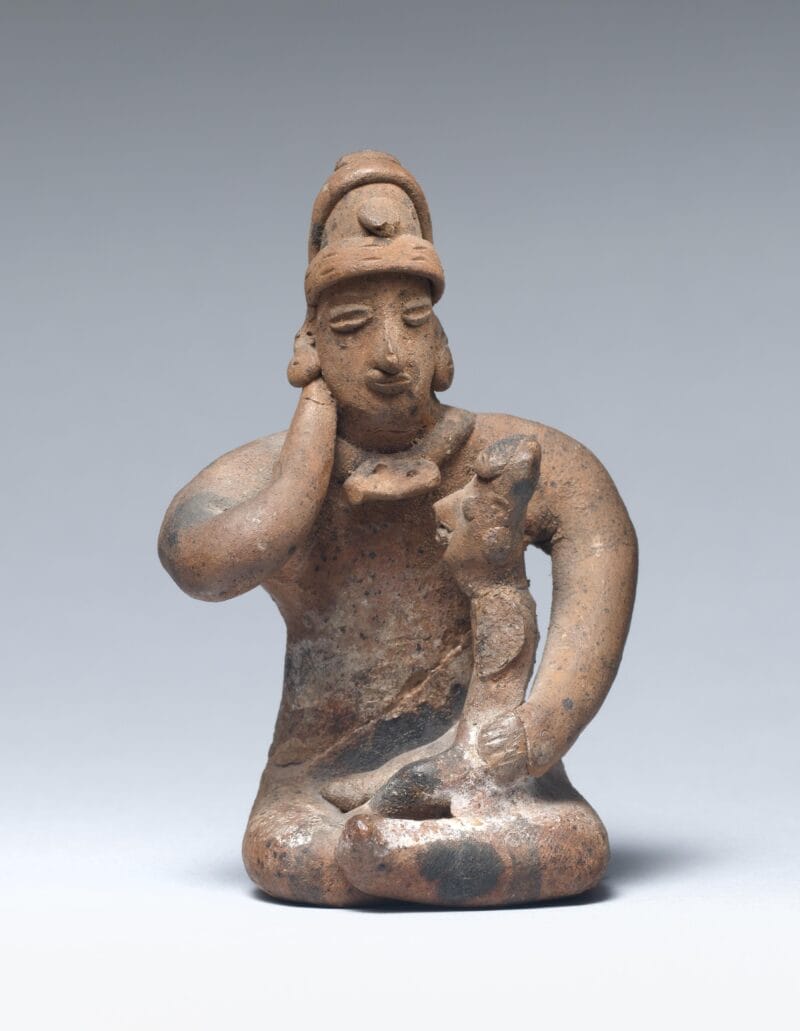
About the Object
This ceramic stirrup and double-spouted vessel displaying a kneeling female figure is slipped in polychrome red and cream paint. The figure has an elaborate hairstyle, while symbols on the upper torso and shoulders may demonstrate social standing. It was likely created by using a mold. The work also displays a metal nose ring believed to date from the same period, revealing knowledge of metalwork.
Additional Information
The Calima–Malagana sites are near the Cauca Valley in what is today Colombia. Lasting between 500–1000 CE, the culture is still little understood. While objects that have been found are mostly associated with burials and contain intricate ceramics and gold work, the gold unfortunately has attracted looters. Looting destroys a great deal of information concerning the context of such works, which can never be re-created. Interestingly, the material culture of Calima–Malagana sites is similar to the earlier Tumaco–La Tolita traditions.
[Throckmorton Fine Art, New York, NY];
Related Objects
You may also be interested in
Vilcek Foundation supports “Grounded in Clay: The Spirit of Pueblo Pottery”
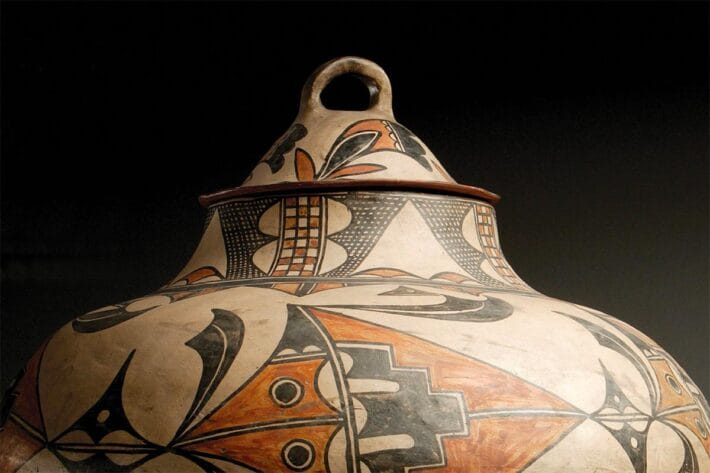
Meleko Mokgosi

Carlos Motta

